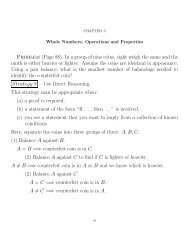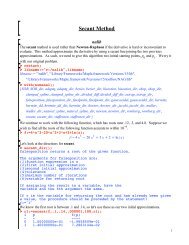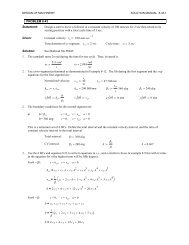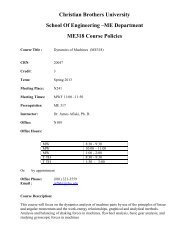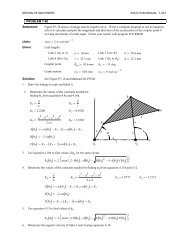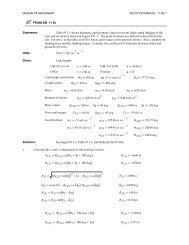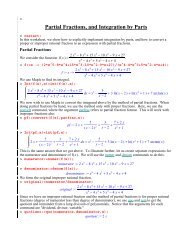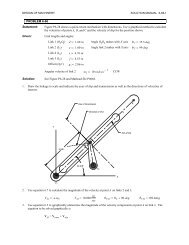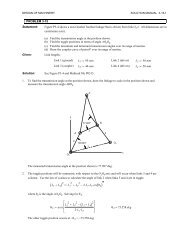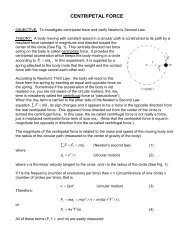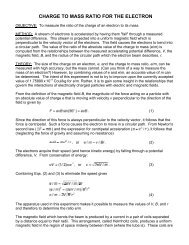Chapter 3 - CBU
Chapter 3 - CBU
Chapter 3 - CBU
You also want an ePaper? Increase the reach of your titles
YUMPU automatically turns print PDFs into web optimized ePapers that Google loves.
3.4. SUBSEQUENCES AND THE BOLZANO-WEIERSTRASS THEOREM 59Theorem (3.4.2). If X = (x n ) converges to x, so does any subsequence(x nk ).Proof. Let ✏ > 0 be given. Since (x n ) converges to x,9 K 2 N 3 8 n K, |x n x| < ✏. Sincen 1 < n 2 < · · · < n k < · · ·is an increasing sequence in N, n k k 8 k 2 N.Let K 0 = n K . Then, 8 n k K 0 = n K , n k K =) |x nk x| < ✏.Thus (x nk ) converges to x.Example. For c > 1, find lim(c 1 n) if it exists.Solution.(a) x n = c 1 n > 1 8 n 2 N, so (x n ) is bounded below.(b) x n x n+1 = c 1 n c 1n+1 = c1n+1 c1n(n+1)1 > 0 8 n 2 N,so (x n ) is decreasing.(c) Thus lim(x n ) = x exists.[Using a subsequence to find x.]Now x 2n = c 12n = c1n12= x n12, so⇤x = lim(x 2n ) = lim x n12= x 1 2 =)x 2 = x =) x 2 x = 0 =) x(x 1) = 0 =) x = 0 or x = 1.Since x n > 1 8 n 2 N, lim(x n ) = 1.⇤



